
*SPOILER ALERT!* Since I’m going to review the whole 8-episode Netflix series Stranger Things, I couldn’t avoid spoilers if I wanted to. So be warned, if you haven’t seen it; if you’ve only seen part of it, you will probably learn things about Stranger Things that you don’t want to know! (My advice: save the review and read it after you’ve seen the whole first season. We can hope that Netflix puts up another season, right?)
There have been several reasons to appreciate Netflix’s “original” series (I use the scare quotes because Jessica Jones and Daredevil can hardly be called original since they’re based on Marvel comics, right?): the two I just mentioned, plus the upcoming Luke Cage series are, in my opinion, stellar (assuming Luke Cage is as well done as those two). And there are two more set for 2017 and 2018: Iron Fist and The Punisher, respectively. (It would take a whole article by itself to comment on all of Netflix’s original programming; so we won’t go into it at this point — besides, I haven’t seen all the SF/F ones yet, so I’m going to keep it simple for now.)

This series was created (as well as partially written and directed) by The Duffer Brothers, Matt Duffer & Ross Duffer. If, like me, you aren’t really familiar with them, it’s because they have lately been involved mostly with Wayward Pines (as writers) and the movie Hidden. Wayward Pines had big problems and I quit watching entirely after the first season ender; Hidden was such a forgettable movie that I (seriously) forgot I’d watched it! Anyway, apparently Netflix was impressed enough with their credentials to give them their own series. (For those who like to binge-watch or, like us, watch an episode or two a day, the whole series is available, like many Netflix series.) From beginning to end, this 8-episode limited series (so far, anyway… who knows if there’ll be a second season) was conceived as an homage to movies, especially ‘80s movies, and to Stephen King (see the similarity in titles in Figure 1). Now, I have no problem with homages, if they’re done well, and some of the scenes here are indeed well done; but some scenes just hit you in the face with them. Which makes me wonder: at what point does “homage” become outright imitation?
For example, if you look at Figure 2, the three main kid protagonists could be from practically any ‘80s movie featuring kid protagonists: E.T. and The Goonies come to mind almost instantly. (Of course, to be fair, is it possible to do a movie set in the ‘80s with kid protagonists and not bring those two movies to mind?)
In fact, there are many “main” protagonists in this series: the kids (Finn Wolfhard as Mike Wheeler; Gaten Matarazzo as Dustin Henderson, and Caleb McLaughlin as Lucas Sinclair); the chief of police (David Harbour as Jim Hopper); a couple of sisters/brothers (Natalia Dyer as Nancy Wheeler and Charlie Heaton as Jonathan Byers); Winona Ryder as a missing kid’s mother, Joyce Byers; and Millie Bobbie Brown as “Eleven,” a young girl. The purported object of the series, Will Byers (Noah Schnapp), is only in the first episode for a short while and doesn’t really reappear until way later.

Okay, quick run-down on the plot in Episode 1 (“The Vanishing of Will Byers”): It’s November 6, 1983 in Hawkins, Indiana. The camera pans in and down from a star-speckled night sky on a large industrial-looking building, bristling with satellite/microwave antennas, surrounded by a chain-link fence; the screen proclaims this to be the Hawkins National Laboratory, U.S. Department of Energy. We cut to inside, where flickering fluorescent lights in a corridor fitfully illuminate a doorway that looks surprisingly like an interior hatchway on a Navy ship; the hatchway slams open and a mustachiod man in a white lab coat runs desperately towards the camera. His face grimaces as he runs; he reaches a corridor with an elevator call button — there is only one button, so we surmise that the elevator goes only up or down from here, not both ways. He is panting; looking fearfully behind him as he punches the button over and over. Finally, the door slides open, and a gate slides upward behind the door, revealing a large industrial elevator. He rushes in and pushes the only button, still looking fearfully down the corridor he’s just come from, as all the lights continue flickering. Suddenly he looks up; we see his face from above and hear the beginnings of a scream as the camera jumps back in the corridor and his body vanishes upward as the elevator gate comes down.
We cut to a lawn sprinkler outside a fairly large two-story house; in the basement inside, the boys (Will, Dustin, Mike and Caleb) are playing D&D. Mike is the DM and it’s Will’s turn — suddenly he’s attacked by the demogorgon. What to do? Caleb, the only Black kid, and Dustin, who appears to be lacking teeth, urge Will to use his fireball; excitedly, he throws the dice, only to have one of them jump off the board and rattle off somewhere in the basement. Did he throw 13 — a winning throw, one surmises (I never played D&D back in the day, myself)? They’re all loudly scrambling around when the door at the top of the basement stairs opens, and Mike’s mom tells him it’s after eight on a school night and he has to go to bed. He “Aww, mom”s her, telling her the campaign took two weeks to plan; how was he to know it would take 10 hours to finish? She’s adamant, and the boys gather their stuff up to leave. Will takes Mike aside as they leave and tells him it was a seven. “The demogorgon got me,” he says, prophetically. They all leave on their banana bikes and go their separate ways in the somewhat misty evening; Will’s path takes him down the darkened road near Hawkins Lab; suddenly, there is a dark figure in his way! Will steers off the road and falls off his bike, but the figure is following, and he runs home. But nobody is there; he locks and puts the chain on the door, but looking out the window he can see he was followed. He tries phoning the police, but there’s only a weird noise on the phone when it’s connected to 911. He runs out the back of the house to a shed, and as he loads a rifle he finds there, we see the chain coming off the front door by itself. Waiting in the back with the rifle pointed at the door, he hears a sound from above him; we see him turn, and the hanging lightbulb brightens; when it returns to normal, the shed is empty. Then the titles appear.

The rest of the show depicts Will’s frantic mother Joyce (Ryder) trying to find her son; the police Chief (Harbour) coming to the realization that something happened; the escapee subject Eleven (Brown) and the kids getting to know each other and realizing that she can help find Will, and so on…all the while doing all sorts of “homages” to ‘80s and other movies. (The title for episode two, “The Weirdo on Maple Street,” which I think is taken from an old Twilight Zone episode called “The Monsters are Due on Maple Street,” but I could be wrong.) The other episode titles have no relevance except for four: “The Body,” which was the original title for the Stephen King short story that inspired the movie Stand By Me.
Along the way we find that the director of the lab, Doctor Brenner (Matthew Modine), has raised this young woman as if she were his own daughter — she calls him “papa” — that is, if raising a child means using her as a lab rat, dressing her only in hospital gowns, putting her in isolation chambers, and making her injure animals with her mind. Eleven is a young telekinetic, like Charlie McGee (Drew Barrymore) in Firestarter, another movie based on King’s work. (Her hair doesn’t blow around like Charlie’s, but that’s because Eleven has a buzz cut, like Charlize Theron in Mad Max: Fury Road. In fact, the director showed that movie to Brown to get her to allow them to cut her hair, see Figure 4.) She does, however, get nosebleeds like Charlie McGee’s father, Andy (David Keith) in Firestarter, which serves to indicate that use of the powers somehow drains her.
So to cut a long series short — *MORE, BIGGER SPOILERS HERE* — it turns out that in the course of activating Eleven’s powers, she has made contact with a being from “upside down,” an alternate dimension, and this being has the ability to open gates into our dimension. Unfortunately for us, this being doesn’t appear to value us for anything except food. We’re munchies…and in a nod to James Cameron’s Alien, it makes some kind of a webby/plasticy/mucousy thing that it keeps its victims in until they’re either ready to eat, or they hatch out something or other. Although it’s not an ‘80s movie, the scenes in “upside down” are extremely reminiscent of Silent Hill, with deserted streets, buildings and cars, and some sort of drifting ash-like substance. The “upside down” reference comes from episode 5 (“The Acrobat and the Flea”), where it’s explained to Mike and the other kids (he’s more or less the leader of the pack; however, Dustin — who’s suffering from cleidocranial dysplasia, an inherited disease, which makes bones and teeth slow to develop — is probably the smartest of the three, to judge from his Corey Feldman-ish behaviour. The actor actually has that disease, btw) that if we think of our dimension as a ribbon of road, we’re like an acrobat balancing on the top, but a flea would be able to go to the underside of the road at will. (Yeah, I thought it was kind of a dumb explanation too.)

Will is alive on the other side, and attempts to talk to Joyce on the phone (Figure 5), but for some reason, when there’s an interface between our dimension and that one, it causes electricity to go nuts, and the phone sparks and dies. Eventually (Figure 6), she figures out how to get Will’s ability to use electricity to communicate. (Of course, a lot of this is reminiscent of Poltergeist.) Meanwhile, Dr. Brenner and all the government people are running around trying to catch and quarantine all the kids (à la E.T., again), which leads to one scene with the kids pedaling down the road with government agents in vans after them and in front of them (sparking my wife, the Beautiful & Talented Lynne Taylor Fahnestalk, to comment “If those bikes start to fly, I’m outta here!”). Eleven, whom Mike calls “El” for convenience, stares really hard at the van in front and it levitates over the kids and crashes upside down behind them, blocking the other vans.
I learned (from the internet) that the uniforms (and Chevy Blazer) on the Hawkins Police are direct copies of the ones used by the Amity Police (and their chief, Roy Scheider) in Jaws, by the way. I think it’s quite probable that Chief Hopper was so named in a nod to Hooper, the character played by Richard Dreyfuss, in that film.

Anyhow, the whole thing works out fairly satisfactorily for our kids — only one named character dies, and it’s not a main character — and enough loose ends were left after the wrap up to be able to do a second season. When we finally get a glimpse of the alien from another dimension, it’s a nod to John Carpenter’s The Thing… watch for the familiar Drew Struzan poster in the film, as well as other familiar movie posters from the era. So, to answer the question: is it homage, or is it copycatting? If I were really snarky, I’d say the latter, but you know what? I actually ended up enjoying this, pretty much. I thought all the kids did very well and were quite believable, although Winona went over the top more than a few times. I will be interested in seeing how they pick it up next year and where the storyline goes from here. By the way, if you’d like to pick up on some of the references to ‘80s films in this series, you can probably find most of them on teh interwebz, and some here.
If you can, please comment on this week’s column. It just takes a moment — go ahead and register and/or comment here, or comment on my Facebook page, or in the several Facebook groups where I publish a link to this column. Your comments are all welcome, pro or con. And don’t feel you have to agree with me to post a comment; my opinion is, as always, my own, and doesn’t necessarily reflect the views of Amazing Stories or its owners, editors, publishers or other columnists. See you next week!
Steve has been an active fan since the 1970s, when he founded the Palouse Empire Science Fiction Association and the more-or-less late MosCon in Pullman, WA and Moscow, ID, though he started reading SF/F in the early-to-mid 1950s, when he was just a sprat. He moved to Canada in 1985 and quickly became involved with Canadian cons, including ConText (’89 and ’81) and VCON. He’s published a couple of books and a number of short stories, and has collaborated with his two-time Aurora-winning wife Lynne Taylor Fahnestalk on a number of art projects. As of this writing he’s the proofreader for R. Graeme Cameron’s Polar Borealis and Polar Starlight publications. He’s been writing for Amazing Stories off and on since the early 1980s. His column can be found on Amazing Stories most Fridays.




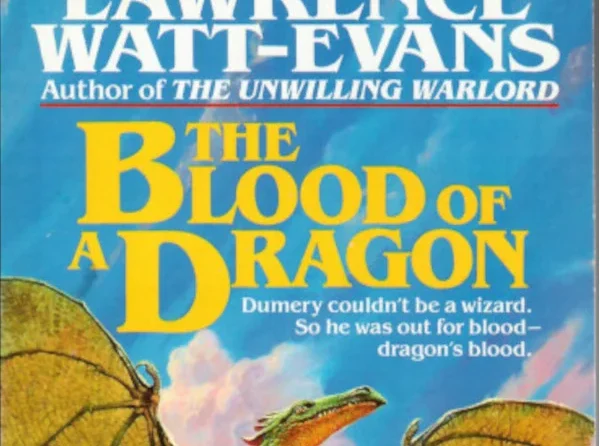
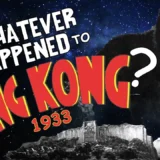
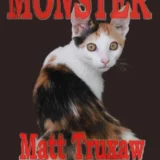
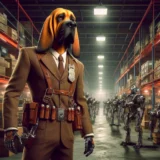
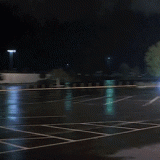

Hey!
Thanks for tracking down all the references. Really thorough job. I’m not sure if you mentioned it but I think the thing that felt the most 80’s to me was the soundtrack. So much Synth. Revenge of the Synth!
I think they did play a lot with the tropes that you expect from an 80’s film too which serves to differentiate and make it modern. For instance, Nancy doesn’t end up with Johnathan (the “outcast” usually gets the girl in 80’s movies and the jock, Steve, usually is alone at the end).
My only problem with Stranger Things is that I enjoyed it soo much. It does feel very nostalgic and I pretty much am tired of that right now. However, apparently in this case, it was modern enough that I was still into it. Idk. I still have to work out my feelings. Anywho thanks for posting. Glad to see discussion of it here on Amazing Stories! Would love to hear more of your thoughts.
I just finished watching the series. It is so awash with 80’s era SF, Fantasy and Horror that if I did not know it had been made in 2016 I would swear it was made back in the day. I was more concerned about the anachronisms (there are a few, not many, but they are jarring enough) then I was about any swipes from 80’s films.
One of the things that I have done frequently as a book designer is to make new books look like old books (pulps, 50’s or 60’s paperbacks, what have you). When you’re doing something like that there will inevitably be some “pinching” of items and ideas. I looked at this series as something similar.
And that’s the challenge. How close can you take it to the old design aesthetic, yet present it as something new? The Duffer Brothers did a masterful job.